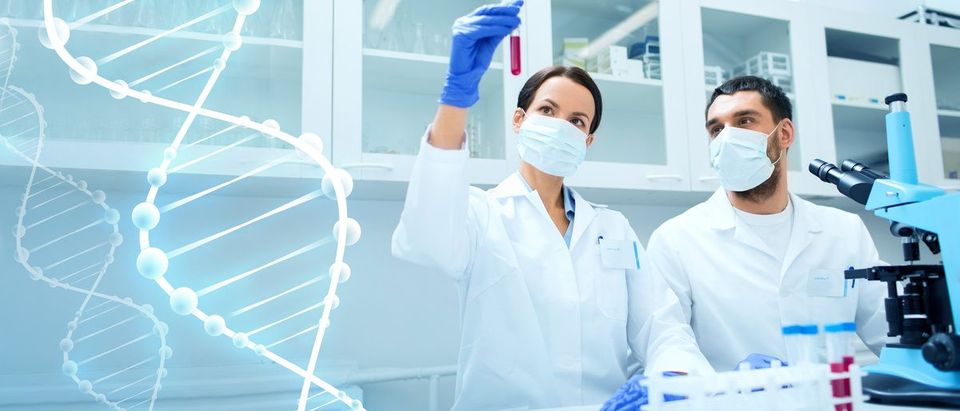A new “supermolecule” could allow nuclear waste to easily be stored and disposed of, according to a new study published by scientists from Indiana University.
Nuclear waste could be transformed using the “supermolecule” into easily held solids through a process called vitrification. The molecule contains two negatively charged ions, which was originally regarded as impossible since it defied a nearly 250-year-old chemical law, and has only recently come under new scrutiny. The “supermolecule” could also be used to neutralize other environmentally hazardous waste.
“An anion-anion dimerization of bisulfate goes against simple expectations of Coulomb’s law,” Dr. Amar Flood, an Indiana University chemistry professor who was the study’s senior author, said in a press statement. “But the structural evidence we present in this paper shows two hydroxy anions can in fact be chemically bonded. We believe the long-range repulsions between these anions are offset by short-range attractions.”
The “supermolecule” creates unusual chemical bonds, which can link pairs of negatively charged molecules together, allowing for waste to be safely disposed of.
“This paper is inspirational because it may launch a new approach to supramolecular ion recognition,” Dr. Jonathan Sessler, a professor of chemistry at the University of Texas at Austin who was not involved in the study, said in a press statement. “I expect this will be the start of something new and important in the field.”
The research was financially supported by a grant from the National Science Foundation.
America’s has had some success in with eliminating nuclear waste with particle accelerators, and has done so with the Spallation Neutron Source in Oak Ridge, Tenn. A similar European particle accelerator, to be completed in 2019, already has a planned experiment to render nuclear waste harmless. Eliminating nuclear waste with particle accelerators has enormous potential, according to a scientist previously interviewed by The Daily Caller News Foundation.
Solutions to nuclear waste aren’t limited to the U.S. Russian officials began testing in August on a pair of major technological breakthroughs which could turn spent nuclear waste into fuel for reactors. The first of the new reactors should be completed by 2025.
Waste-free unconventional nuclear reactors based on molten salt and modular designs could restart the atomic age by providing cheap and meltdown-proof nuclear power. These reactors were originally developed at the Department of Energy’s Oak Ridge National Laboratory, but were abandoned because they couldn’t be used by the military. These reactors simply can’t cause major nuclear accidents, like those seen at Chernobyl and Fukushima, because they operate under regular atmospheric pressure and use a more stable fuel source.
Despite the potential solutions to nuclear waste, America is in the process of abandoning nuclear power largely due to environmentalist pressures. The U.S. currently gets 20 percent of its power from nuclear, according to the U.S. Energy Information Administration, but could get less than 10 percent of its electricity from nuclear by 2050, according to the International Atomic Energy Agency. Of the 59 new nuclear reactors under construction worldwide, only four of them are being built in the U.S. — just enough to compensate for shutting down older reactors.
Send tips to andrew@
All content created by the Daily Caller News Foundation, an independent and nonpartisan newswire service, is available without charge to any legitimate news publisher that can provide a large audience. All republished articles must include our logo, our reporter’s byline and their DCNF affiliation. For any questions about our guidelines or partnering with us, please contact licensing@dailycallernewsfoundation.org.


